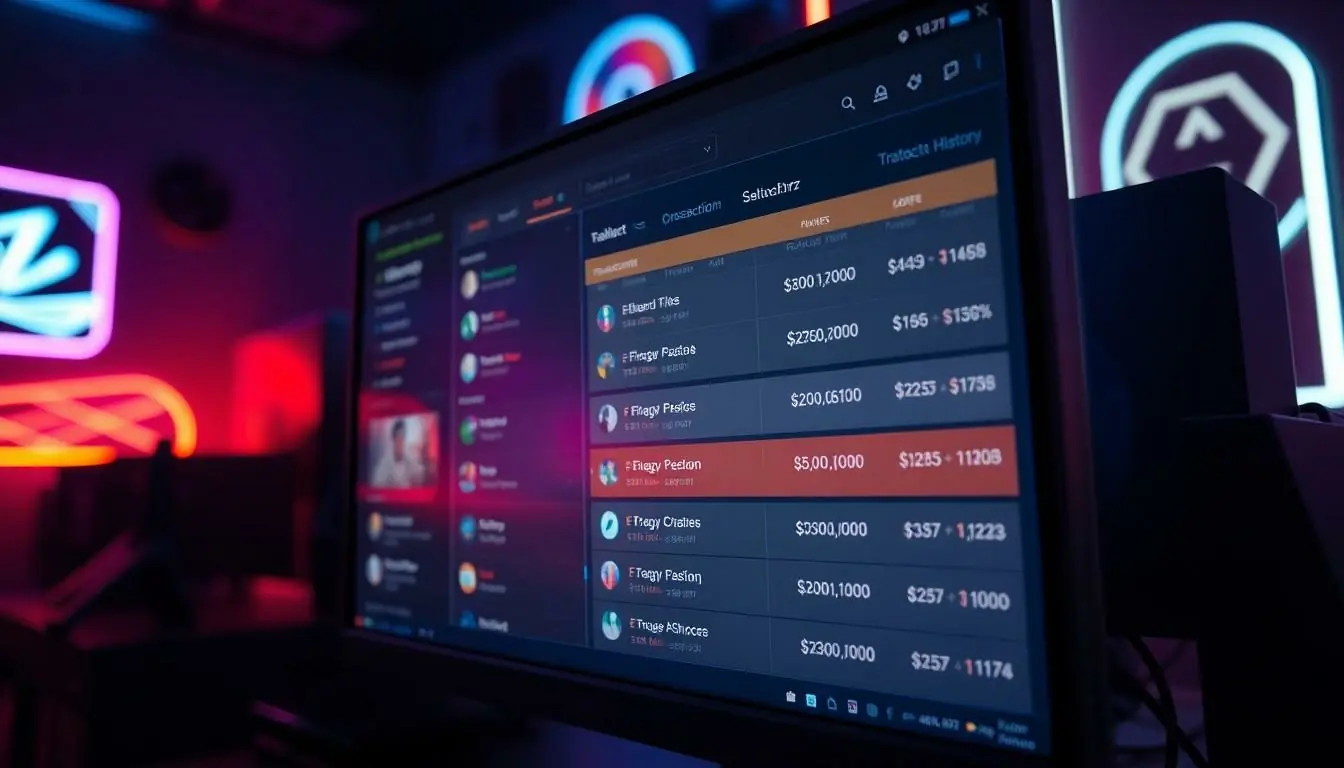Ever wondered just how much your Valorant obsession is costing you? You’re not alone. Many players dive headfirst into the game, snagging skins and battle passes, only to realize later that their wallets have taken a hit. It’s like finding out your favorite snack has a hidden calorie count—surprising and a little painful!
Table of Contents
ToggleUnderstanding Valorant Purchases
Players can easily overlook the financial impact of purchasing items in Valorant. Understanding these expenditures helps in managing budgets effectively.
Types of In-Game Purchases
Skins represent one of the most popular types of purchases. Players often buy weapon skins to customize their gameplay experience. Battle passes provide another option, granting access to exclusive rewards over a season. Valorant agents sometimes require unlockable skins or character packs, which adds to the overall spending. Consumables, like in-game currency, also fall under this category, enabling additional purchases. Each of these options contributes to the cumulative spending throughout a player’s journey.
Importance of Tracking Spending
Tracking spending in Valorant proves crucial for financial awareness. Players can better understand their purchasing habits by regularly reviewing their transactions. Monitoring expenses helps in avoiding overspending and ensures resources are allocated wisely. Awareness of cumulative costs fosters responsible budgeting, preventing unpleasant surprises. Setting limits can aid in maintaining control over finances while enjoying the game. Engaging in this practice leads to a more enjoyable gaming experience without the burden of financial stress.
Methods to Check Your Spending
Understanding how much was spent in Valorant is crucial for managing finances. Players can utilize multiple methods to track their expenses.
Using the Valorant Client
Access the Valorant client to view recent purchases. Click on the storefront tab; it lists all transactions linked to the account. Players can see the prices for skins, battle passes, and other items bought. Players notice a detailed overview of spending history, which helps in assessing total expenditures. Reviewing this frequently helps maintain awareness of financial habits.
Checking Through Riot Games Account
Sign in to the Riot Games account on the official website for thorough spending insights. Navigate to the account settings; there, transaction history provides a comprehensive breakdown of all purchases. This includes the date, amount spent, and item descriptions, making it easy to track spending over time. Players can access this information anytime, ensuring they remain informed about their financial activities in Valorant. Keeping an eye on this data supports better budgeting and spending decisions.
Third-Party Tools and Resources
Utilizing third-party tools can enhance players’ ability to track their spending in Valorant. These resources provide additional features that help players analyze their financial habits more effectively.
Recommended Spending Trackers
Many players find value in using budgeting apps like Mint or PocketGuard. These applications allow users to link their bank accounts and categorize expenses, including in-game purchases. Players can review transaction histories tailored specifically to spending on gaming. Other tools, such as Excel or Google Sheets, offer customizable templates for tracking and managing personal finances related to gaming. These allow for tailored insights into expenditure trends, helping players spot areas to cut back on spending.
Community Insights and Recommendations
Engaging with community forums can yield helpful spending insights. Subreddits like r/VALORANT host discussions where players share budgeting tips and experiences. Many players recommend setting monthly limits based on their in-game spending patterns. Community members often suggest utilizing certain tracker websites for additional data on spending habits. These platforms provide insights into popular trends, allowing players to make informed decisions regarding their purchases.
Tips for Managing Your Valorant Expenses
Managing expenses in Valorant helps players maintain financial awareness and prevent overspending. Implementing effective strategies makes tracking purchases straightforward.
Setting a Budget
Establishing a budget serves as a crucial first step for players. Spending limits can help players stay within their financial means while enjoying the game. Consider evaluating current expenses related to other gaming platforms or activities. Allocating a specific amount for in-game purchases each month ensures that players stick to their budgets. Setting clear priorities also helps avoid impulsive purchases, allowing for intentional spending on items that enhance the gaming experience.
Monitoring Your Spending Habits
Tracking spending habits fosters greater awareness of financial decisions. Players can regularly review transactions made in Valorant to understand overall expenditures. Noting trends and patterns offers valuable insight into purchasing behavior. Using budgeting apps and customizable spreadsheets aids in monitoring these expenses effectively. Engaging in community discussions about spending habits can also reveal useful tips for saving. Adjusting budgets based on insights reinforces responsible spending, allowing for an enjoyable gaming experience without financial strain.
Conclusion
Understanding how much is spent on Valorant is crucial for maintaining a healthy gaming budget. By regularly checking purchase history through the Valorant client or the Riot Games website players can gain valuable insights into their spending habits. Utilizing budgeting apps and community resources further empowers players to manage their finances effectively.
Establishing a clear budget and engaging in discussions about spending can lead to a more enjoyable gaming experience. By taking control of their financial decisions players can enjoy the thrill of Valorant without the stress of overspending. Ultimately this awareness not only enhances their gameplay but also supports responsible gaming practices.




